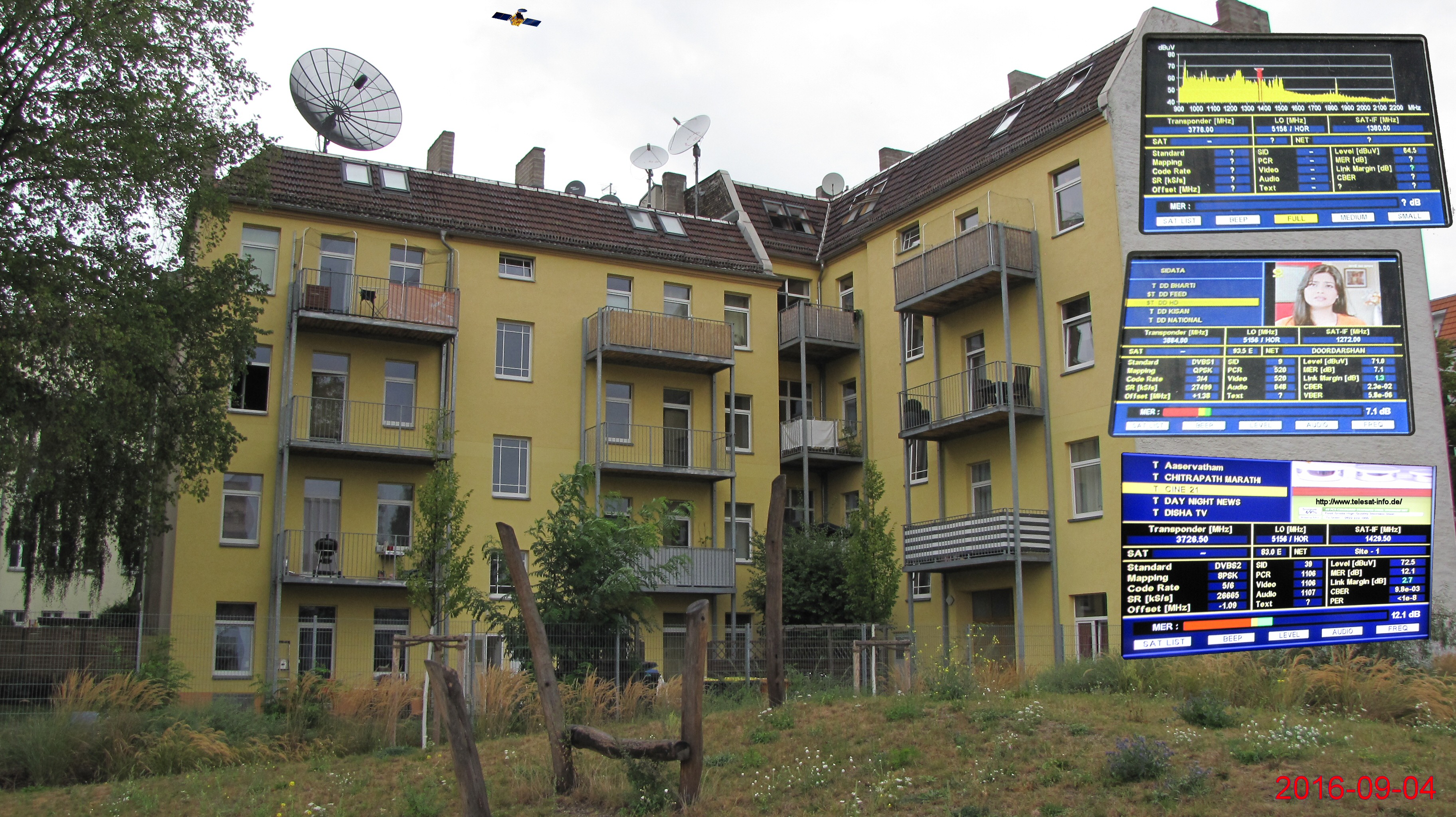www.rhci-online.net/radiogram/radiogram.htm
██╗██████╗ ██████╗ ██████╗ █████╗ ██████╗ ██╗ ██████╗ ██████╗ ██████╗ █████╗ ███╗ ███╗
██║██╔══██╗██╔════╝ ██╔══██╗██╔══██╗██╔══██╗██║██╔═══██╗██╔════╝ ██╔══██╗██╔══██╗████╗ ████║
██║██████╔╝██║ ██████╔╝███████║██║ ██║██║██║ ██║██║ ███╗██████╔╝███████║██╔████╔██║
██║██╔══██╗██║ ██╔══██╗██╔══██║██║ ██║██║██║ ██║██║ ██║██╔══██╗██╔══██║██║╚██╔╝██║
██║██████╔╝╚██████╗ ██║ ██║██║ ██║██████╔╝██║╚██████╔╝╚██████╔╝██║ ██║██║ ██║██║ ╚═╝ ██║
╚═╝╚═════╝ ╚═════╝ ╚═╝ ╚═╝╚═╝ ╚═╝╚═════╝ ╚═╝ ╚═════╝ ╚═════╝ ╚═╝ ╚═╝╚═╝ ╚═╝╚═╝ ╚═╝
RSID: <<2016-09-07T20:31Z
MFSK-32 @ 6070000+1500>>
START START
QUESTA E' IBC, ITALIAN BROADCASTING CORPORATION
TRASMISSIONI IN ITALIANO:
MERCOLEDI' 20.00-22.00 UTC
6070 KHZ
VENERDI' 01.00-01.30 UTC
9955 KHZ
SABATO 01.30-02.00 UTC 11580 KHZ
website: HTTP://WWW.IBCRADIO.WEBS.COM
email: IBC@EUROPE.COM
"IBC DIGITAL" "IBC DIGITAL" "IBC DIGITAL"
OGNI MERCOLEDI' 20.30-21.00 UTC
6070 KHZ IN MFSK32 (1500 Hz) E IN OLIVIA 16-500
(2200 Hz)
OGNI VENERDI' 01.25-01.30 UTC
9955 KHZ IN MFSK32 (1500 Hz)
OGNI SABATO
01.55-02.00 UTC 11580 KHZ IN MFSK32 (1500 Hz)
BUONA DECODIFICA!
"RADIIOPASSIONI.IT"
a cura di Andrea Lawendel
L'emergenza provocata dal tifone Lionrock riaccende le onde medie e corte
dell'est siberiano
Il profondo est russo č scosso dalla peggiore tempesta degli ultimi 40 anni, le
scorte di cibo e acqua devono essere aviotrasportate, le devastazioni sono
superiori a quelle registrate nel 1989 con il tifone Judy. E Radio Rossii decide
di ripristinare i servizi in
onde medie e onde corte dagli impianti siberiani, gli stessi che erano stati
messi frettolosamente in pensione un paio d'anni fa. Giŕ nei mesi scorsi la
repubblica siberiana della Yakuzia aveva ripreso a diffondere sulle onde corte,
nei 41 metri, i programmi di Radio
Sakha (http://nvk-online.ru/),
perché l'FM non era sufficiente per le esigenze di ascolto di una popolazione
sparpagliata in un territorio vastissimo.
Lo sfacelo provocato dal tifone "Lionrock" dimostra ancora una volta che le
infrastrutture radiofoniche in onde medie e corte, con la loro capacitŕ di
assicurare una copertura territoriale molto estesa a partire da un unico punto
emittente, possono essere fondamental
i. E che le conseguenze del cambiamento climatico suggeriscono estrema
attenzione quando si tratta di decidere se smantellare o anche semplicemente
mettere in naftalina impianti che necessitano di regolare manutenzione per
funzionare senza problemi.
I DXer stanno seguendo l'evoluzione con i loro ricevitori, anche remotizzati. La
frequenza onde corte piů attiva č quella dei 5900 tra le 10 e le 14 UTC, dalle
possibili localitŕ siberiane di Tulagino in Yakuzia, Kamchatka o Arman/Magadan
nel nord siberiano.
Ripristinato anche il trasmettitore di Razdolnoye su
810 kHz.

http://mp3.ptr-vlad.ru/Radio810.m3u
"IBC DIGITAL" "IBC DIGITAL"
SWITCH NOW TO OLIVIA 16-500(2200 Hz)
RSID: <<2016-09-07T20:34Z OL
16-500
@ 6070000+2200>>
START START
"DX ITALIA DX NEWS" by I2MQP
ON NOW OR WITHIN NEXT WEEK ---- IN ARIA ORA O ENTRO UNA SETTIMANA
3B8 Mauritius Sep 16 - Sep 19 ZS4TX will be active as 3B8TX also EME QSL H.C.
dir & LoTW
5W Samoa Sep 10 - Sep 17 VK2BOB will spend one week holiday in Samoa and will be
on QSL H.C. dir
7P Lesotho Aug 26 - Nov 5 K7TRB will be on as 7P8VA QSL H.C. dir & bur
8T Antartica Now - Dec 2016 VU3BPZ is active as BT2BH QSL I1HYW
9A Croatia Aug 1 - Sep 30 PA4JJ is on /9A QSL OQRS
9X Rwanda Now - Dec 30 KB1ZSQ is on as 9X0JW during spare time
A3 Tonga Sep 3 - Sep 21 VA7YM will sign A31YM from OC-049 and OC-169
A5 Bhutan Sep 8 - Sep 17 JH1AJT E21EIC DJ9ZB; will sign A5A QSL JH1AJT dir
C9 Mozambique NOW - Mar 2017 PD0JBH is now on as C91PA QSL H.C. & LoTW
D4 Cape Verde Sep 15 - Sep 28 DK8FA will operate as D44TUJ H.C.
E5/S S. Cook Sep 8 - Sep 19 JA2FJP & JF2MBF will be on signing E51Q QSL JA2FBY
OQRS
FK New Caledonia Sep 5 - Sep 12 F8FUA will be on from OC-033 QSL H.C. dir & bur
LoTW
FM Martinique Sep 12 - Oct 3 DD5ZZ will be /FM
FP S. Pierre Sep 10 - Sep 20 TO5FP by a French group from NA-032
GU Guernsey Sep 4 - Sep 10 HB9EMP will be /MU QSL LoTW
HB0 Liechtenstein Sep 11 - Sep 18 DL2SBY & SP2FOV will be /HB0 QSL Dir & Club
Log
I Italy Sep 9 - Sep 11 IJ7TA group will be on from EU-073 QSL IZ8EGM
J6 St.Lucia Aug 26 - Sep 11 K9EZ will be on again as J68HZ QSL H.C. LoTW ClubLog
JD Minami Torishima Aug - Sep JG8NQJ will be /8 QSL JA8CJY dir JG8NQJ bur
JT Mongolia Aug 30 - Sep 24 OK1DBS will be on from different locations as JT1DBS
& JT1DBS/3 QSL H.C.
JW Svalabard Sep 7 - Sep 12 SM7RYR will be on holiday signing /JW QSL LoTW only
KG4 Guantanamo Sep 13 - Sep 26 K4MIL will be on as KG4SS QSL H.C. LoTW dir/bur
KH0 Mariana Sep 7 - Sep 11 OH6RX & OH7WW will be there and will operate during
spare time signing AH0K QSL OH6GDX
OJ0 Market Reef Sep 3 - Sep 10 OH3WS will be on during spare time signing OJ0W
QSL H.C dir & bur
OJ0 Market Reef Sep 10 - Sep 17 OH3JR will be on as OJ0JR QSL H.C.
OX Greenland Aug 31 - Sep 13 OX3LX will be active from NA-134 will also be on
EME
OY Faroe Sep 15 - Sep 21 8 ON operators will sign OY/ON6NB QSL ON4ANN & LoTW
PA Netherland Sep 3 - Sep 17 PD5MVH will be /p from EU-038 Will sign PD38EU on
sep 10/11 QSL H.C.
PJ4 Bonaire Sep 3 - Sep 24 PA3BWK will be /PJ4 QSL H.C. dir & LoTW
T32 E.Kiribati Sep 1 - Sep 15 KH6QJ will be on (contests included) as T32AZ QSL
H.C.
V3 Belize Now - Oct end PA0C will sign V31HV & V31HV/p QSL H.C. dir
VK Australia Sep 9 - Sep 13 VK5MAV will be /6. More details will follow QSL H.C.
dir & bur
VP6 Pitcairn Sep 3 - Nov 25 DL2AH as VP6AH QSL DL2AH
W USA Sep 9 - Sep 11 KG4JSZ will be active from NA-085 QSL QRZ.com
YJ Vanatu Aug 21 - Sep 21 KC0W will be on signing YJ0COW QSL H.C. dir
ZB Gibraltar Sep 5 - Sep 10 ZB2TT will be on for Gibraltar National Week QSL
M0URX
END
"DX ITALIA DX NEWS" by I2MQP
"IBC DIGITAL"
END
██████╗ ██╗ ██████╗ ██╗ ██████╗ ██╗ ██╗
██╔══██╗██║██╔════╝ ██║ ██╔══██╗╚██╗██╔╝
██║ ██║██║██║ ███╗██║ ██║ ██║ ╚███╔╝
██║ ██║██║██║ ██║██║ ██║ ██║ ██╔██╗
██████╔╝██║╚██████╔╝██║ ██████╔╝██╔╝ ██╗
╚═════╝ ╚═╝ ╚═════╝ ╚═╝ ╚═════╝ ╚═╝ ╚═╝
RSID: <<2016-09-05T20:00Z
MFSK-32
@ HYBRID-6070000+1500>>
Hello and welcome to DigiDX 27 a weekly review of the latest shortwave
and DX news mainly in MFSK32 mode. This broadcast includes shortwave
news, a review of the Soft66RTL3 by Akos Czermann and the e-QSL card.
DigiDX weekly schedule:
Sunday 2130 - 15770kHz via WRMI (Okeechobee, FL, USA)
Sunday 2330 - 11580kHz via WRMI (Okeechobee, FL, USA)
Sunday 1830 - 6070kHz via Channel 292 (Rohrbach Wall, DE)
Monday 2000 - 6070kHz via Channel 292 (Rohrbach Wall, DE)
To buy shortwave time from Channel 292 at very reasonable prices go to
http://www.channel292.de or from WRMI
from http://www.wrmi.net/
Any other extra broadcasts will be listed on
http://www.digidx.uk
If you enjoy DigiDX and find the service useful please consider donating
via Paypal to reports@digidx.uk or via our Patreon page. Any money
donated will go towards paying for airtime to keep DigiDX on the air to
Europe and North America.
Every donation will help no matter how little
-https://www.patreon.com/digidx.
/ reports@digidx.uk
Thanks very much to listeners Oscar Marazzini, Alan Gale, Jordan
Heyburn, Fred Albertson, Mike Stapp, Mark Braunstein and Richard Langley
for contributing via Paypal or to the Patreon campaign.
Latest Shortwave News:
Voice of Vietnam new schedule
Radio Nigeria Kaduna back on air
Radio Prague 80th Anniversary
Deutsche Welle start live coverage of Bundesliga
Voice of Vietnam new schedule
Voice of Vietnam have launched a new schedule coming into effect on the
1st of September 2016. The schedule ends many of the broadcasts via
Babcock sites in Woofferton, UK and the UAE with transmissions from
Vietnam or relays via WHRI in South Carolina.
The new English language schedule is
below, all broadcasts are 30
minutes long:
Western Europe
- 1800 UTC - 5955 kHz
Europe, Central Asia
- 1900 UTC - 7280 khz,
9730 khz
Europe, Central Asia
- 2130 UTC - 7280 khz,
9730 khz
UK, Central Europe
- 1600 UTC - 7280 khz,
9730 khz
Africa, Middle East
- 2030 UTC - 7220 khz,
9550 khz
Indonesia
- 2330 UTC - 9840 khz, 12020 khz,
Eastern America
- 0100 UTC - 6175 khz
Eastern America
- 0230 UTC - 6175 khz
Central America, Caribbean
- 0230 UTC - 7315 khz
Central America Caribbean
- 0000 UTC - 7315 khz
Indonesia
- 1000 UTC - 9840 khz, 12020 khz
Laos, Thailand, Cambodia
- 1100 UTC - 7285 khz
Japan, Guangzhou
- 1130 UTC - 9840 khz, 12020 khz
Indonesia
-
1230 UTC - 9840 khz, 12020 khz
Japan, Guangzhou
-
1330 UTC - 9840 khz, 12020 khz
Laos, Thailand, Cambodia, Indonesia - 1500 UTC - 9840 khz, 12020 khz, 7285 khz
Europe, Central Asia
- 1600 UTC - 7280 khz,
9730 khz
Africa, Middle East
- 1600 UTC - 7220 khz,
9550 khz
It is understood the similar changes have taken place on the other
language broadcasts of Voice of Vietnam with Babcock and other relays no
longer used.
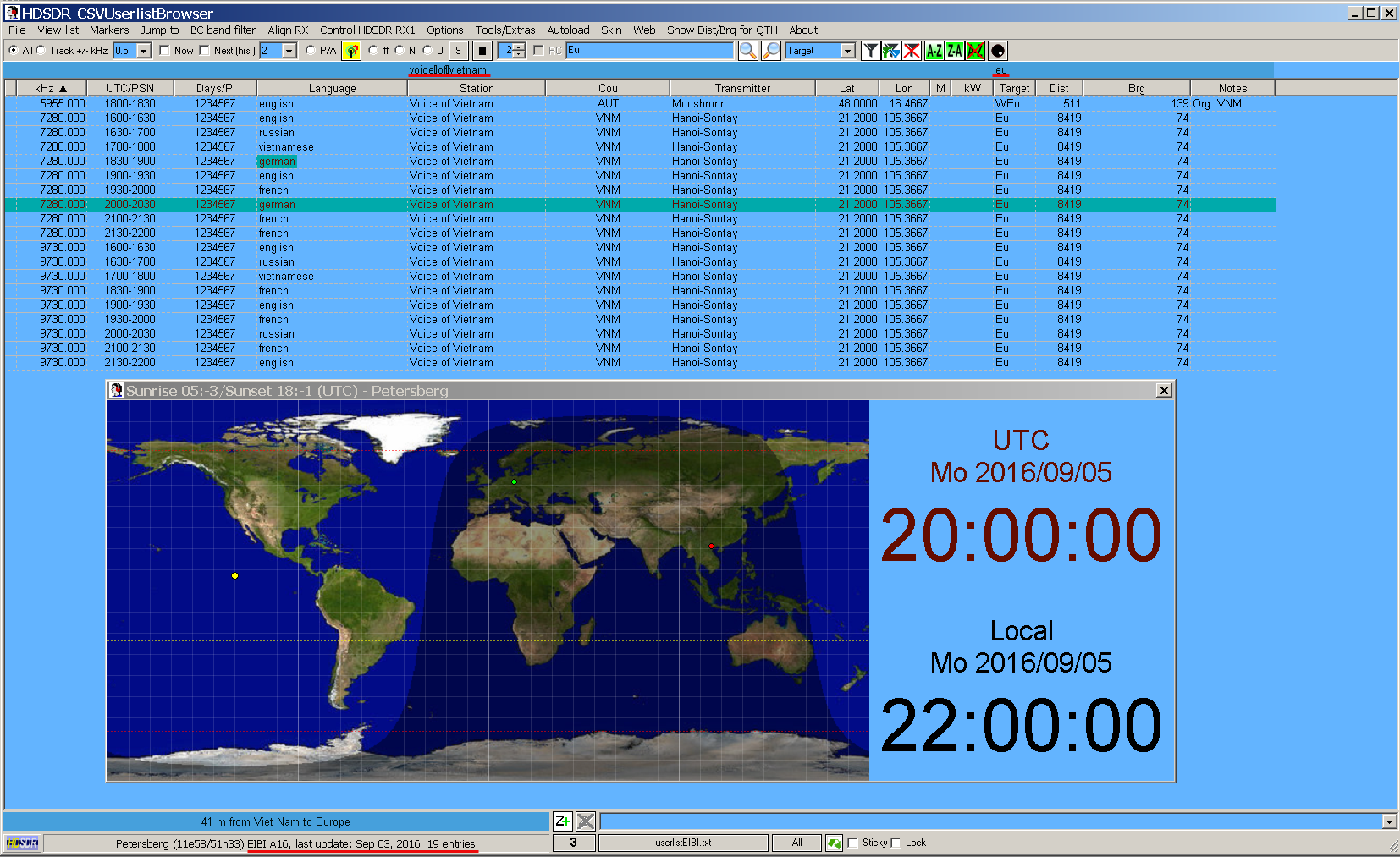
Radio Nigeria Kaduna back on air
After several months off the air, Nigerian station Radio Nigeria Kaduna
has returned to shortwave on 6089.85kHz. The station broadcasts in
English, Nupe and Kanuri with a target area of Sub-Saharan Africa.
Voice of Nigeria in DRM mode is also back on the air on 15120kHz each
weeknight.
Radio Prague 80th Anniversary
Radio Prague on Wednesday 31st of August celebrated the 80th anniversary
of its first, shortwave broadcast, which was from outside Pardubice in
East Bohemia on 31 August 1936. In connection with the anniversary the
Foreign Czech of the Year Award, selected by Radio Prague and fellow
Czech Radio station Vltava, was presented to doctor Karel Pacák. Radio
Prague has six language sections, each of which produce a half-hour
programme daily.
A special broadcast was made via Shortwave-Service and the transmitter
in Armenia on the following frequencies:
1630-1700 UTC on 9535 kHz towards 65° Russia at 100kW (Russian)*
1800-1900 UTC on 11845 kHz towards 305° Europe at 100kW (German / French)
1930-2030 UTC on 9885 kHz towards 330° Scandinavia at 100kW (Czech / English)
2100-2130 UTC on 9405 kHz towards 280° Southern Europe at 100kW (Spanish)
A special QSL will also be produced for anyone who sent reception reports for
this transmission.
Deutsche Welle start live coverage of
Bundesliga
German broadcaster Deutsche Welle have started a weekly shortwave
transmission with live Bundesliga coverage in Hausa. Two frequencies are
used each Saturday on the following schedule:
1325-1530 on 17570 ISS 500 kW / 162 deg to WeAf Hausa Sat Football
1325-1530 on 17840 ISS 500 kW / 170 deg to WeAf Hausa Sat Football
The next Bundesliga broadcast will be on the 10th of September. FM
coverage is also provided on DW’s FM relays in Swahili and Hausa.
Upcoming relays and special broadcasts:
VOA Radiogram will be on air this weekend on the following frequencies,
for more information on the modes to be used visit
http://voaradiogram.net/
Sat 0930-1000 5745 kHz
Sat 1600-1630 17580 kHz
Sun 0230-0300 5745 kHz
Sun 1930-2000 15670 kHz
After a summer break Gilles Létourneau who runs the excellent
OfficialSWLchannel channel on Youtube is back with two radio related
Hangouts this week. They will be on Friday 19th at 2100 and Saturday
20th August at 2000UTC.
To watch the hangouts or any of his videos go to
https://www.youtube.com/user/OfficialSWLchannel
Review: Soft66RTL3 All-in-One by Akos Czermann of
rtlsdr4everyone.blogspot.co.uk
$38 dollars shipped: RTL-SDR based receiver with upconverter and band
preselector, thermal pad and heatsink. In a metal case. Covers DC to
daylight.
Too good to be true, so I ordered one. Available on maker's webpage
(http://zao.jp/radio/soft66rtl/).
Turns up on ebay from time to time,
not available at the moment.
*First impressions
Delivery took 15 days from Japan to Ireland, unassuming brown postal
envelope, receiver carefully covered in bubble wrap and a final plastic
layer - unwrapping literally felt like Christmas came early.
Marginally larger than a regular RTL-SDR dongle, connectors protected by
translucent yellow caps, tough-looking aluminum shell (not a full
enclosure) sided by two rubber/plastic/unidentifiable material at
connectors.
Side panel gap on one side was significant enough between cover and
metal housing that light shone through.
No antenna, power cable, instruction manual, thank you card, but that
seems to be the norm with small-scale manufacturers.
*Importance of cable
Needs a USB Mini-A cable for data/power: noise pickup was terrible with
a plain and long cable. One more cable and connector type to hunt down -
could please manufacturers settle on Micro-USB and offer the option to
order one along with the receiver? Thanks.
If buying new, shop for the shortest cable with one or two blobs on each
end. Those metal cylinders are called ferrites, and will lower radiated
noise pickup from household items.
Snap-on ferrites are an alternative and only cost a few dollars.
*Exterior
Antenna connectors: SMA Female, compatible with handheld transceiver
antennas and premium dongles' antenna cable.
Two separate connectors, one for HF (below 30 MHz) and one for higher
frequencies - two antennas can be connected at the same time, like a
discone for 30 MHz and up, and a dedicated wire for below. HF connector
is right next to selector switch, easy to identify, red = HF.
Preselector and LED: 4 bands selectable with red rotary switch, which is
also removable - slot for screwdriver on both, attention to detail.
Small hole: says "RF gain" on the product webpage, does nothing above 30
MHz. Needs small cross-headed screwdriver.
*Take it apart
Remove two massive screws (largest and toughest ever seen on any
dongle-related product) from the preselector side, board slides out from
grooves integrated into the side shell. Text on board by a tripping
post-apocalyptic beauty pageant:
IMAGINE PEACE WORLD PLASMA UNIVERS NO BIGBANG FUKSHIMA Human extinction
Architecture is pure genius: a tiny dongle (marked by red lines in the
image) piggybacked onto a printed circuit board (PCB). Dongle's antenna
connector is soldered onto the PCB's SMA connector, presumably by hand,
fingerprint visible on back of board. Talk about personal touch. Thermal
pad and heatsink stuck onto dongle, blue material is much more stickier
than $1 China pads or the SMArt's layers; remained sticky after
countless removals. Top of heatsink and chips on other side leave a
minimal gap.
*Band preselect and upconverter
Uses 50 MHz local oscillator.
Product webpage shows wrong settings. Red knob with clicks, numbers on
the dial, turn to a number and signals in the corresponding range should
be better (called a band-pass filter in radio speak). LED lights turn
red for 30 MHZ and up, and green for HF: Position 4: 0.4 to 1.2 MHz (LED
green) Position 5: 1.2 to 5 MHz (LED green) Position 6: 5 to 15 MHz (LED
green) Position 6: 15 to 30 MHz (LED green) Other positions: upconverter
off (LED red). Turning the knob in VHF and UHF has a small effect, 8 and
9 are the same, zero raises the noise floor.
On HF, wrong setting will completely eleminate received stations.
*Software
Worked with SDRUno straight away (beginner start guide link
http://rtlsdr4everyone.blogspot.ie/p/an-rtl-sdr-affordable-10-for-unbranded.html),
latest SDRSharp did not recognise receiver, but previous
version functioned well.
*Drift, heat, tuner
Weird behavior, three stages: 1. Extremely rapid drift, then a jump, 2.
Gradual drift to 26 ppm in 5-6 minutes, then 3. Slow final settle in an
additional 8-10 minutes. 31 ppm final once thermal equilibrium reached.
Case temperature by hand is well below other metal enclosure dongles.
R820T designation refers to the tuner part of any RTL-SDR dongle:
determines receive performance. Newer and more sensitive version is
called R820T2, used in recent dongles from $8 generics to $20+ premium
products.
*Performance VHF and UHF
Same outdoor pro discone antenna I use for years, and staple testing
signals were simply not there.
Sensitivity is terrible all across the spectrum, and not just on weak
signals: even local airport information system required the most gain to
get the lowest Signal-to-Noise ratio, and sounded much less clear and
noisy.
ADS-B performance with an outdoor half-wave antenna on a ground plane
metal box from a first-floor windowsill was well below average: 5
messages per airplane, when 30-35 is normal for my location. After a
week of daily use, and with a choice of either the Soft66RTL3 or any
other dongle, I don't reach for the tiny black box. Audio quality is not
great, similar to listening to music with a thrift-shop earphone.
Constant buzzing, noise everywhere, like the neighbor shaving on a
washing machine whilst simultaneously fighting a hive of bees.
*HF performance
50 MHz is added to received signal, so 7 MHz will be heard on 57 MHz.
City center with 20 foot / 6.5 meters of wire, screenshot of 40 meters,
signals everywhere:
At least it works reasonably well on HF with a nearly quarter-wave
antenna for this particular band. Have a dongle and thinking of plugging
the Soft66RTL3 in with a USB cable? A Ham-It-Up from Nooelec costs $42
plus shipping, doesn't come with a metal case, but soothes with
brand-name peace of mind and 6 months' warranty. And better performance,
R820T also used to give the Soft66RTL3 a chance, gain adjusted in
software for best audio on strong shortwave broadcast station with a
discone.
Ham-It-Up v1.3 with either dongles resulted in understandable audio,
Soft66RTL3 was unintelligible. Strongly suspect that the PCB board /
upconverter part is quite noisy, compounded by less than stellar R820T
dongle performance.
*Conclusion
Disappointing, because this little all-in-one promises tremendous value
for money. Doesn't deliver: performance above 30 MHz is absolutely and
comparatively sub-standard, HF works with a long wire. 38 dollars for
the Soft66RTL3 is a waste of money; buy a generic chinese for $8 and try
direct sampling if funds are short. Better buys exist: spend 25 bucks
and get a full, usable and high-sensitivity premium dongle package from
either rtl-sdr.com or Nooelec. Maybe if small size appeals, and you are
desperate for a dongle plus upconverter.
PS. Soft66RTL3 for sale, one lady owner, always garaged, low mileage.
Sending Pic:212x310C;
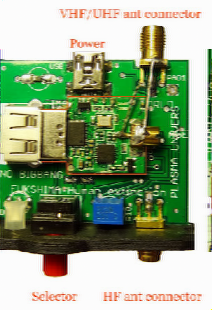
That image was of the Soft66RTL3's circuit board This shows the strange text
on the board:
IMAGINE PEACE WORLD
PLASMA UNIVERS
NO BIGBANG
FUKSHIMA Human extinction
Now we have also as an MFSK32 image, this weeks e-QSL card
Sending Pic:466x266;

We now conlcude this DigiDX broadcast with Olivia 16-500 on 1500Hz.
RSID: <<2016-09-05T20:25Z
OL 16-500 @
6070000+1500>>
Thank you for all your reports on our Olivia 16-500 1500 vs 2200Hz
experiment last week, and as Jonathan Coles from Canada suggested we
will test this again perhaps with another mode too soon.
Thank you for listening, please send reports, comments and shortwave
related news or articles to reports@digidx.uk.
This is DigiDX Signing
off.....
██╗ ██╗██████╗ ██████╗ ██████╗ █████╗ ██████╗ ██╗ ██████╗ ██████╗ ██████╗ █████╗ ███╗ ███╗
██║ ██╔╝██╔══██╗██╔════╝ ██╔══██╗██╔══██╗██╔══██╗██║██╔═══██╗██╔════╝ ██╔══██╗██╔══██╗████╗ ████║
█████╔╝ ██████╔╝██║ ██████╔╝███████║██║ ██║██║██║ ██║██║ ███╗██████╔╝███████║██╔████╔██║
██╔═██╗ ██╔══██╗██║ ██╔══██╗██╔══██║██║ ██║██║██║ ██║██║ ██║██╔══██╗██╔══██║██║╚██╔╝██║
██║ ██╗██████╔╝╚██████╗ ██║ ██║██║ ██║██████╔╝██║╚██████╔╝╚██████╔╝██║ ██║██║ ██║██║ ╚═╝ ██║
╚═╝ ╚═╝╚═════╝ ╚═════╝ ╚═╝ ╚═╝╚═╝ ╚═╝╚═════╝ ╚═╝ ╚═════╝ ╚═════╝ ╚═╝ ╚═╝╚═╝ ╚═╝╚═╝ ╚═╝
|
http://www.kbcradio.eu/
RSID:
<<2016-0
9-04T01:30Z
MFSK-32 @
STREAM-9925000-1500>>
Next UTC Sunday, the Mighty KBC moves to 6145 kilohertz.
Your radio dial should look something like this ...
Sending Pic:254x74C;

Please report this
decode to themightykbc@gmail.com
██╗ ██╗ ██████╗ █████╗ ██████╗ █████╗ ██████╗ ██╗ ██████╗ ██████╗ ██████╗ █████╗ ███╗ ███╗
██║ ██║██╔═══██╗██╔══██╗ ██╔══██╗██╔══██╗██╔══██╗██║██╔═══██╗██╔════╝ ██╔══██╗██╔══██╗████╗ ████║
██║ ██║██║ ██║███████║ ██████╔╝███████║██║ ██║██║██║ ██║██║ ███╗██████╔╝███████║██╔████╔██║
╚██╗ ██╔╝██║ ██║██╔══██║ ██╔══██╗██╔══██║██║ ██║██║██║ ██║██║ ██║██╔══██╗██╔══██║██║╚██╔╝██║
╚████╔╝ ╚██████╔╝██║ ██║ ██║ ██║██║ ██║██████╔╝██║╚██████╔╝╚██████╔╝██║ ██║██║ ██║██║ ╚═╝ ██║
╚═══╝ ╚═════╝ ╚═╝ ╚═╝ ╚═╝ ╚═╝╚═╝ ╚═╝╚═════╝ ╚═╝ ╚═════╝ ╚═════╝ ╚═╝ ╚═╝╚═╝ ╚═╝╚═╝ ╚═╝
http://voaradiogram.net/
|
NB: There
seems to be a problem with the slanted images is because the CD player in
North Carolina that feeds VOA Radiogram to the transmitter is out of
adjustment.
You can
un-slant the images making this adjustment to Fldigi before receiving the
show: Configure > Sound Card > Settings > Corrections > -2220 RX ppm
Or, make no
adjustment to Fldigi, but play the recording back with a speed adjustment of
-0.222% You can do this with Audacity: Effect > Speed Change |
RSID: <<2016-09-03T16:01Z
MFSK-32 @ HYBRID-17580000+1500>>
Welcome to program 179 of VOA Radiogram from the Voice of
America.
I'm Kim Andrew Elliott in Washington.
Here is the lineup for today's program, all in MFSK32 centered on
1500 Hz, except where noted:
1:38 Program preview (now)
3:01 Astronomers give odd radio signal another
look*
8:34 Princeton University revives a large
satellite receiver*
15:42 Storm Hermine might disrupt this weekend's show*
19:22 QRP transceivers as shortwave broadcast receivers*
22:31 Photo from Juno flyby of Jupiter*
26:07 Closing announcements*
28:27 Olivia 64-2000: ASCII art under closing music
(use monospace font, eg Courier)
* with image
Please send reception reports to radiogram@voanews.com.
And visit voaradiogram.net.
Twitter: @VOARadiogram
What Was That? California Astronomers Give Odd Radio Signal
Another Look
Reuters via voanews.com
August 30, 2016
CAPE CANAVERAL, FLORIDA - A curious radio signal picked up by a
Russian telescope is probably not a transmission from an
extraterrestrial civilization, but astronomers in California are
taking a second look anyway, the SETI Institute said Tuesday.
Russian astronomers last year detected what appeared to be a
non-naturally occurring radio signal in the general location of a
star system 94 light-years from Earth.
Their findings emerged after Italian researcher Claudio Maccone,
who chairs the International Academy of Astronautics committee on
the Search for Extraterrestrial Intelligence, or SETI, told
colleagues of a presentation he'd heard about the signal, said
Seth Shostak, a director at the SETI Institute.
"I don't think we're taking it terribly seriously," Shostak said.
"The Russians looked in this direction 39 times, and as best we
can tell they found it once."
Most likely, the radio signal was caused by terrestrial
interference or a satellite, a common occurrence, Shostak told
Reuters.
If the Russians thought they had a serious signal from ET, he
said, they also most likely would have disclosed it sooner.
"They didn't say anything about it for more than year. If we had
found a signal, we'd check it out and call up other astronomers
to check it out as well," Shostak said.
Neptune-sized planet
Nevertheless, SETI astronomers have spent the last two nights
using an array of radio telescopes in California to study the
suspect star, HD 164595, which has one known planet in orbit.
The planet is about the size of Neptune, but circles its star far
closer than Mercury orbits the sun. HD 164595 could have other
planets in orbit that are more suitably positioned for water,
which is believed to be necessary for life.
So far, though, astronomers have not detected any unusual signals
from the star, Shostak said.
"We have to be very careful not to get cynical about false
alarms," he said. "It's easy to say, 'Aw, man, it's just another
case of interference,' but that risks not paying attention when
you should."
http://www.voanews.com/a/california-astronomers-give-radio-signal-second-look/3487618.html
Image: Radio telescopes of the Allen Telescope Array are seen in
Hat Creek, California ...
Sending Pic:247x133C;
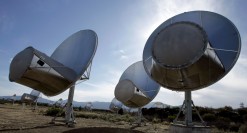
This is VOA Radiogram from the Voice of America.
Please send reception reports to
radiogram@voanews.com.
From Princeton University:
Cold War-era satellite dish, restored by Princeton scientists,
becomes teaching tool
Catherine Zandonella
August 25, 2016
In its heyday, the towering metal satellite dish located about
three miles from the Jersey Shore's boardwalks hosted its share
of historical moments: It tracked the flights of some of
America's first space launches, and in 1960 it collected the
first images beamed to Earth from an orbiting weather satellite.
The feat was considered so amazing that the photos were rushed to
President Dwight D. Eisenhower, ushering in the era of modern
weather forecasting.
After a decade of scanning the skies, however, the dish fell into
disuse and became immobilized by rust while weeds grew up around
the base and wasps nested in its crevices. There it sat until
four years ago when two Princeton University scientists set out
to restore the dish as a way to bring students - both from the
University and local communities - closer to outer space.
This spring, the now-functional satellite receiver hosted about
20 Princeton students from an undergraduate physics class who
learned how to receive radio signals not just from orbiting
satellites but also from astrophysical objects such as dying
stars. The dish has also hosted scores of amateur radio
enthusiasts and is open to the public each Wednesday and on
weekends, when visitors can watch as the massive dish sweeps the
sky.
"We didn't realize what we were getting into when we first
decided to take on this project," said Daniel Marlow, Princeton's
Evans Crawford 1911 Professor of Physics, who led the
refurbishment effort with Senior Research Physicist Norman
Jarosik. "Luckily we had a lot of cooperation from Princeton's
Department of Physics and the University, along with terrific
partners in the community."
...
Finally, in the winter of 2015, the researchers were ready to try
out the dish to see if it could intercept radio signals from
space. They turned the knobs that control the dish, and steered
it so that it looked up at a region of the Milky Way. There they
detected radio-wave signals at a frequency of 1420.4 MHz and a
wavelength of 21 centimeters, a well-known signal of hydrogen gas
in the Milky Way and a sure sign that the dish was operating
properly.
Soon they were able to intercept information streaming from
weather satellites operated by the National Oceanic and
Atmospheric Administration. The researchers could also detect
pulsars, dying stars that give off regular repeating bursts of
radio waves as they rotate. The researchers beamed radio signals
to the moon and intercepted them as they came back to Earth.
On January 10, 2016, radio enthusiasts - along with InfoAge
supporters, Jarosik and Marlow, who himself is an amateur radio
operator - gathered at the dish to commemorate the first such
"moon bounce," which took place in 1946 on the site of the
current dish and at the time was important proof of principle
that radio waves could be harnessed for satellite communications.
Full text and video:
https://www.princeton.edu/main/news/archive/S47/15/45G61
See also: infoage.org
Sending Pic:164x251C;
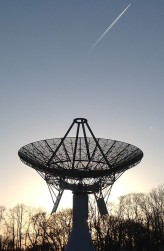
This is VOA Radiogram from the Voice of America.
Please send reception reports to
radiogram@voanews.com.
Are we on the air? Tropical Storm Hermine
Transmission of VOA Radiogram might be disrupted this weekend as
Tropical Storm Hermine passes along the North Carolina coast on
Saturday morning. The Edward R. Murrow shortwave transmitting
station is located near the North Carolina coast, along the
forecast track of the storm. ...
Sending Pic:222x202C;
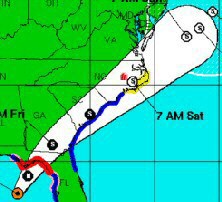
The amateur radio Hurricane Watch Net is activated for Tropical
Storm Hermine. Its frequencies are 14325 kHz USB and 7268 kHz
LSB. See:
http://www.arrl.org/news/hurricane-watch-net-activating-for-hermine-hawaii-dodges-madeline-skywarn-eyeing-lester
QRP transceivers as shortwave broadcast receivers
It turns outs that at least some QRP (low power) amateur radio
transceivers are competent shortwave broadcast receivers. This
is especially true given that a firmware update to the US-made
Elecraft KX2 now allows AM, and not just SSB and CW, reception.
Thomas Witherspoon at the SWLing Post blog tested shortwave
broadcast reception on his AM-capable KX2, comparing it with
reception on another QRP rig, the LNR Precision LD-11.
Thomas concludes: "Here's what amazes me as an SWL and ham radio
operator: both of these QRP transceivers offer excellent HF
broadcast listening opportunities."
http://swling.com/blog/2016/08/am-mode-comparing-the-elecraft-kx2-with-the-lnr-precision-ld-11/
Image: The Elecraft KX2 transceiver ...
Sending Pic:255x125C;
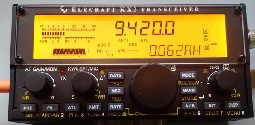
This is VOA Radiogram from the Voice of America.
Please send reception reports to radiogram@voanews.com.
Image: NASA's Juno spacecraft successfully completed the first of
36 scheduled orbital flybys of Jupiter recently. In this view,
Jupiter's north polar region is coming into view as the
spacecraft approaches the giant planet. This view of the Jovian
planet was taken on 8/27/16, when Juno was 703,000 kilometers
away. ...
Sending Pic:193x254C;

http://blogs.voanews.com/science-world/2016/08/31/august-2016-science-images/
Please send reception reports to radiogram@voanews.com.
And visit voaradiogram.net.
Twitter: @VOARadiogram
Thanks to colleagues at the Edward R. Murrow shortwave
transmitting station in North Carolina.
I'm Kim Elliott. Please join us for the next VOA Radiogram.
This is VOA, the Voice of America.
Sending Pic:506x45C;

RSID: <<2016-09-03T16:28Z
OL 64-2K @ 17580000+1500>>
_
_
\ / / \ /\
|_) _.
_| o _
_ ._ _. ._ _
\/ \_/ /--\
| \ (_| (_| | (_) (_| | (_|
| | |
_|
www.rhci-online.net/radiogram/radiogram.htm
